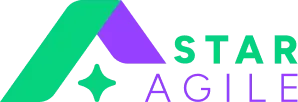In this modern era, every type of work relies on technology. Companies need software and data to smoothen their operations and compete with others. Even healthcare, financing, and factory workers need IT specialists in their jobs. Therefore, technology is very useful, and its demand is rising every day. This field provides better and high-paying jobs.
For non-IT professionals, this transformation offers new opportunities. Many roles within IT do not require in-depth skills in coding. The knowledge of non-IT experts in finance, marketing, or customer service can be useful in IT roles.
However, switching from non IT to IT seems hard, and sometimes people may also think it's too late, but it is not. With proper learning and practice, anyone can build a rewarding career in this field. The key is to start with small steps and remain consistent.
Are you ready to make your career in the IT sector? Let us break down the best ways to make this transition smooth.
Assessing Your Current Skill Set
The way of work is changing fast. More companies need technology experts. But many professionals wonder whether they can make careers in technology or not. The fact is, with the right approach and dedication, you get the answer to your question, “How to switch from non IT to IT?” and build your career in the IT industry easily. Let us learn how you can begin on your path of technology roles.
[1] Evaluating Your Existing Skillset
Your present job has taught you many skills that may be required in IT careers. For instance, you would be good at listening attentively and summarising complicated ideas as a customer service representative. The same skills make one excel at IT support or business analysis roles. The experts in sales generally can be great at being project managers. This is because they are familiar with team collaboration and setting deadlines.
Your experience in other fields can give you valuable perspective. Examine your daily tasks and note the skills you are using. You might be analysing data or conducting meetings. Your skills translate very well to IT roles.
[2] Identifying the Gaps
Different IT roles need different abilities. Business analysts must understand how software projects work. Data analysts need to know statistics and data analysis tools. Software testers should learn about quality assurance methods. Research job posts for roles that you are interested in. Make notes of the technical requirements that appear often.
Start with basic computer skills if you do not have them. Learn about the common office software and basic internet tools. Then, move to specific skills for your chosen role. There are many platforms like Star Agile that provide you with IT courses. Also, they provide you with certifications that will help you build your resume.
Aside from this, remember that you do not need to learn everything at once. Select one area you will start with. For example, if you are interested in data analysis, then you can start with a spreadsheet before getting to the complex tools. Divide your learning into smaller steps. This way, the process will be less intimidating, and you can keep track of your progress more effectively.
The industry knowledge you have is valuable as well. If it is healthcare, medical terms and processes mean something to you. It helps in healthcare IT roles. In comparison, financial experience will help in banking technology jobs. Use it as a foundation while you build new technical skills.
Overall, this means being honest about your current skills and what you still need to learn. This is how you make your career change a real plan. Study and research the requirements of the various roles in IT. It can help you decide on a path that suits you best in terms of interests and strengths.
Exploring IT Career Paths for Non-IT Experts
The job market keeps changing as technology grows. Many people want to try something new in their careers. The shift to information technology careers brings better opportunities and growth potential. Making this change needs planning and understanding of different roles. Moving from your current job to a technology career can open new doors. Following are some of the IT career paths you can choose.
[1] Software Testing
It is a good place to start, especially for a beginner. Software testing does not require coding; it just needs basic knowledge of codes. However, this course demands attention to detail and problem-solving skills. You can get knowledge of basic testing tools through short-term DevOps courses.
[2] Web Development
Web development is another option for non-IT experts. Many developers started with basic HTML, CSS and JavaScript before moving to advanced coding. These positions usually require good problem-solving skills.
[3] Data Science
More and more companies want to hire people who know how to work with data. It is a great job choice today because almost every business needs these skills. Data scientists help companies make smart choices by looking at lots of information. They use computer tools to find and fix problems. Further, they also take confusing information and convert it into apparent, handy facts that everyone can use to make better decisions.
[4] Project Management
Project management is a better option for individuals who want to make a career in the IT sector without coding. It aims to achieve specific project goals. Project management includes pi planning, managing and executing the task to convert the vision into a functional product. The main task of project managers involves coordinating processes, team members and manager resources.
[5] Selecting the Right Path
Pick a career that aligns with your interests and current skills. Consider what aspects of your job you enjoy the most. If you like solving problems, then technical roles would be a better option. If you have good communication and management skills, then project management would be a better fit. Review job descriptions for various roles. Determine which ones apply your existing skills. Start with less technical roles as you acquire new skills.
Master DevOps Certification Training in Chennai with StarAgile – Enroll Now to Boost Your Career with Hands-On Training and Industry-Recognized Certification!
Learning the Basics - Building Your IT Foundation
Starting a new career path needs dedication and planning. Many individuals feel uncertain when they think about how to switch from non IT to IT. They are often confused about where to begin.
With the right information, you can make the shift from the non-IT sector to the IT industry easily and successfully. A solid foundation will help you grow in any IT role. The below points will help you know how to start building your technical knowledge from scratch.
[1] Core IT Skills
Every IT professional needs some basic skills. Programming teaches you how computers work and solve problems. You can start with CSS, HTML and JavaScript. This gives you a basic knowledge of programming. After that, you can pick any of the programming languages like Java or Python. Python is generally an easy language to learn, and it is also widely used. Database knowledge lets you work with information effectively. Learn SQL to handle data in most business settings. Besides this, networking basics teach you how computers communicate with each other. This core knowledge helps in almost every IT job.
[2] Certifications and Courses
Begin with entry-level certifications that match your goals. A Content Management System (CMS) certification helps you manage websites. Python certificates can further help you build a career in full-stack development and data science. In contrast, SQL certifications prove you can work with databases. Online platforms like StarAgile offer affordable courses. Their courses, such as automation testing courses, often include practice tests and projects.
Also, when choosing courses, prioritise them based on good reviews and clear learning paths.
[3] Practical Learning
Just reading and understanding the technology is not sufficient. Learning must be taken on a "hands-on basis". Participate in coding camps and learn and become ready quickly in just months. Short-duration courses concentrate individually on one of the tools or language. Do regular practice and prepare specific projects at small scales while you are still learning. Be a website maker, simple programmer, and data scientist. Always try to opt for an IT company intern. Real work experience teaches you things that courses cannot. It also helps you build a strong portfolio. Overall, practice every day and be careful with yourself. Consistency in small steps leads to big progress over time.
Devops Course+
6 Months Internship
50% OFF
Gaining Relevant Experience
Once you have gained the knowledge or completed the courses, the next step is to get placement. This needs experience and a good portfolio. The following tips will help you to get placement in a reliable IT industry.
[1] Volunteer and Freelance Work
Start small. You build confidence in IT skills by volunteering to help a local non-profit organisation with technical help. They might want someone to make a simple website or manage their social media. Additionally, freelancing will give you a chance to work on small tech projects. Each project teaches you something new and builds your portfolio. Try different types of work to find what you like most.
[2] Finding Opportunities at Work
Your current job might offer ways to practice IT skills. Show interest in technology projects at your workplace. Your experience in the company provides you with valuable skills when technical changes happen. Keep track of all the technical tasks you do. They become part of your IT experience.
[3] Building Professional Networks
Connect with people who work in IT roles. Join local tech meetup groups or online communities. The experienced IT workers will help you in the tech journey through their experience and knowledge. Share your journey and ask them questions about their work. Ask them for advice about starting in technology. You need to find a mentor who can basically guide your learning path. They can also recommend good resources and tell you about common mistakes. With online platforms like LinkedIn you can find IT professionals around you.
Preparing for the Switch in the IT Field
Moving over into the realm of information technology offers newer experiences. Your experience and current skills can help you get better tech jobs. However, your resume plays a crucial role in getting placement. Showcase new technical skills first through your professional portfolio that explains why you are perfect for a tech role. List your certifications and relevant projects. Make sure that the resume remains simple and narrow in focus toward IT-related capabilities.
Practice common tech interview questions. Learn about basic coding concepts and industry terms. Many companies use technical screening tests. Take online practice tests to build confidence. Ask IT professionals to take your mock interviews. Their feedback helps you improve your answers.
Use job websites that specialise in tech roles. Naukri and LinkedIn have a large number of IT job postings in India. Follow the tech companies you like on these platforms. Set up job alerts for roles that match your skills. Also, join IT groups on LinkedIn to learn about new openings. Update your profile with tech-related keywords. This makes it easier for recruiters to find you.
Ending Notes
Following the right path can help you seamlessly change from non IT to IT. The demand for technology skills is increasing. With the relevant skills, some certifications, and hands-on experience, you will be on the right track. Keep moving forward patiently and take small steps toward your ultimate goal. Transitioning into an IT career requires good consistency and effort.
Starting today with StarAgile for automation testing course, DevOps course or Data Science course will lead to seamless ways of unlocking new growth in a successful manner.










